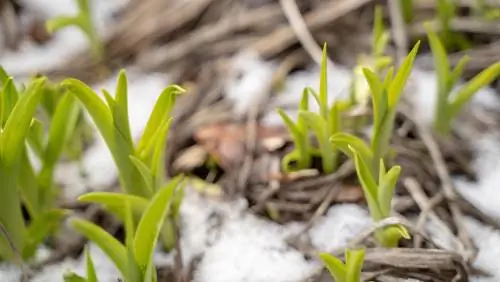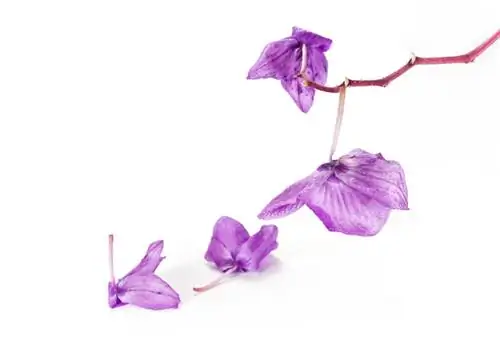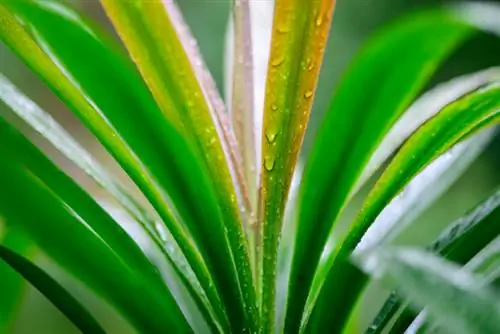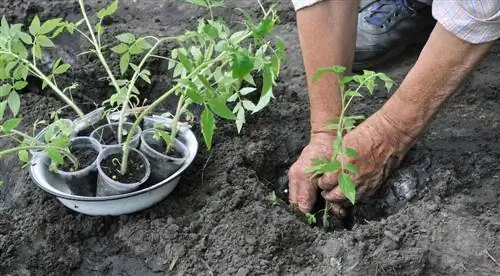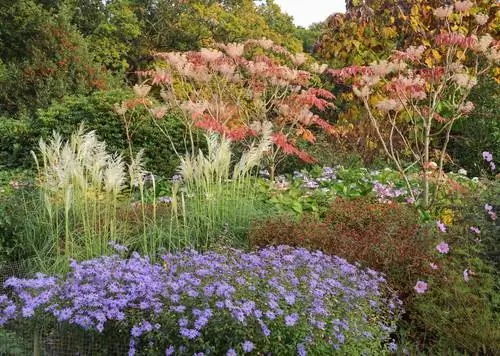- Author admin [email protected].
- Public 2024-01-02 03:03.
- Last modified 2025-01-23 11:21.
Ornamental grasses are often cultivated by hobby gardeners. In combination with flowering plants, they are an eye-catcher in every garden. The hardy ornamental grasses begin to sprout again in spring. Other grasses only sprout in summer.
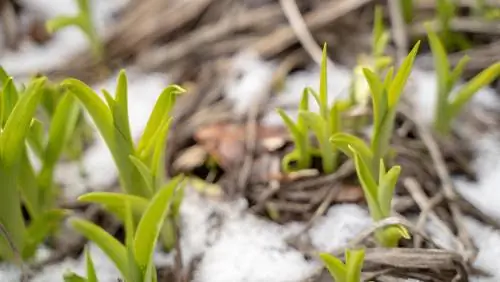
When do ornamental grasses begin to sprout again?
Ornamental grasses sprout again at different times of the year, depending on the type and variety. Early ornamental grasses begin to sprout in spring and prefer shady locations, while late ornamental grasses sprout from May when temperatures rise and often only bloom in late summer.
Early and late ornamental grasses
If you include ornamental grasses in your garden planning, you have to decide between tall and short grasses and choose varieties for sun and shade. All of these types of grass have different times for new growth.
The early grasses
These are low-growing grasses. They retain their color even in winter and bring brown, red or even green and blue splashes of color to the winter garden. This article will show you how you can color your pampas grass decoration.
These early pampas grass varieties have special characteristics that distinguish them from the late ornamental grasses:
- They are evergreen.
- They prefer shady locations.
- Low temperatures do not have a negative effect on their growth.
- They develop new shoots in early spring.
- They already unfold their flowers in spring.
- The rest phase begins in the summer months.
Various varieties of early ornamental grasses
Many varieties of early grasses are known that differ in growth and appearance.
Some examples:
- The white-edged Japanese sedge, white-green striped leaves, grows up to 40 cm high
- The gold-edged Japanese sedge, yellow-green foliage
- The giant sedge, 50 cm long leaves, 120 cm high inflorescences
- The blue oat, 40 cm high, develops flowering fescues up to one meter high
- The bearskin fescue, 15 cm high, ground cover
The late ornamental grasses
These only begin to sprout when the temperatures rise. They develop their first shoots in May. Due to the late growth, the flowers only develop in late summer. The late ornamental grass varieties also have their unmistakable characteristics:
- They come in a wide variety of colors.
- They have a striking autumn color.
- They keep their dead leaves in winter as a natural protection against the cold.
- They are only cut in spring.
Various varieties of late grasses
The late grasses are also represented with different varieties, with miscanthus having a particularly large variety of species.
Some examples:
- The miscanthus with the varieties Nippon (copper-colored), Silberfeder (golden yellow), Malepartus (red-brown), Ghana (dark red)
- The heavy metal switchgrass with a light yellow color
- The red ray bush with red leaf tips and reddish-brown coloring in September
- The Japanese blood grass with red leaf tips
- The Pennisetum and Giant Pipegrass turn bright yellow in autumn
Also find out about pampas grass and how fast pampas grass grows, when pampas grass blooms, what to do if your pampas grass doesn't bloom and how to braid your pampas grass.

